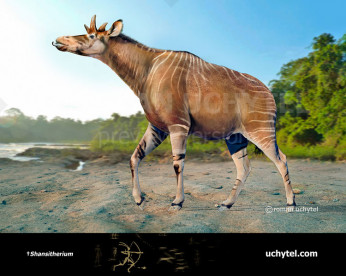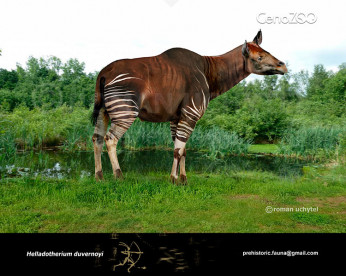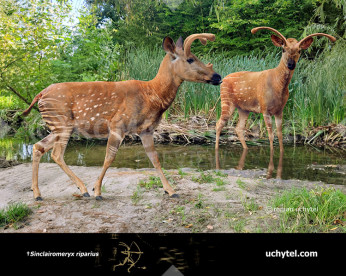Prolibytherium magnieri
357357Prolibytherium (†Prolibytherium (Arambourg, 1961))
Order: Artiodactyla
Family: †Prolibytheriidae
Time period: the Early Miocene of North Africa and Pakistan (16.9 to 15.97 million years ago).
Dimensions: length - 1,8 m, weight - 100 - 180 kg
Typical representative: Prolibytherium magnieri
Prolibytherium is an extinct artiodactyl ungulate native to Early Miocene North Africa and Pakistan, from around 16.9 to 15.97 million years ago.
The 1.80 metres long creature would have superficially resembled an okapi or a deer. Unlike these, however, Prolibytherium displayed dramatic sexual dimorphism, in that the male had a set of large, leaf-shaped ossicones with a width of 35 centimetres, while the female had a set of slender, horn-like ossicones.
The taxonomic status of Prolibytherium remains in flux. At one time, it was described as a relative of Sivatherium (as a precursor to "Libytherium maurusium" (S. maurusium)). Later, it would be regarded as a palaeomerycid, or either as a climacoceratid, or as a basal member of Giraffoidea. With the discovery and study of a female skull in 2010, Prolibytherium is tentatively regarded as a climacoceratid.
Prolibytherium (†Prolibytherium (Arambourg, 1961))
Order: Artiodactyla
Family: †Prolibytheriidae
Time period: the Early Miocene of North Africa and Pakistan (16.9 to 15.97 million years ago).
Dimensions: length - 1,8 m, weight - 100 - 180 kg
Typical representative: Prolibytherium magnieri
Prolibytherium is an extinct artiodactyl ungulate native to Early Miocene North Africa and Pakistan, from around 16.9 to 15.97 million years ago.
The 1.80 metres long creature would have superficially resembled an okapi or a deer. Unlike these, however, Prolibytherium displayed dramatic sexual dimorphism, in that the male had a set of large, leaf-shaped ossicones with a width of 35 centimetres, while the female had a set of slender, horn-like ossicones.
The taxonomic status of Prolibytherium remains in flux. At one time, it was described as a relative of Sivatherium (as a precursor to "Libytherium maurusium" (S. maurusium)). Later, it would be regarded as a palaeomerycid, or either as a climacoceratid, or as a basal member of Giraffoidea. With the discovery and study of a female skull in 2010, Prolibytherium is tentatively regarded as a climacoceratid.

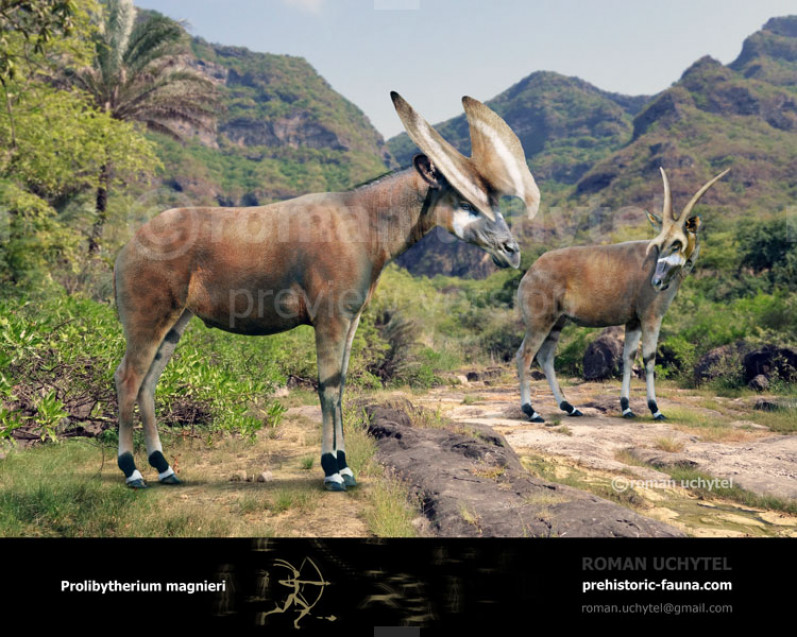
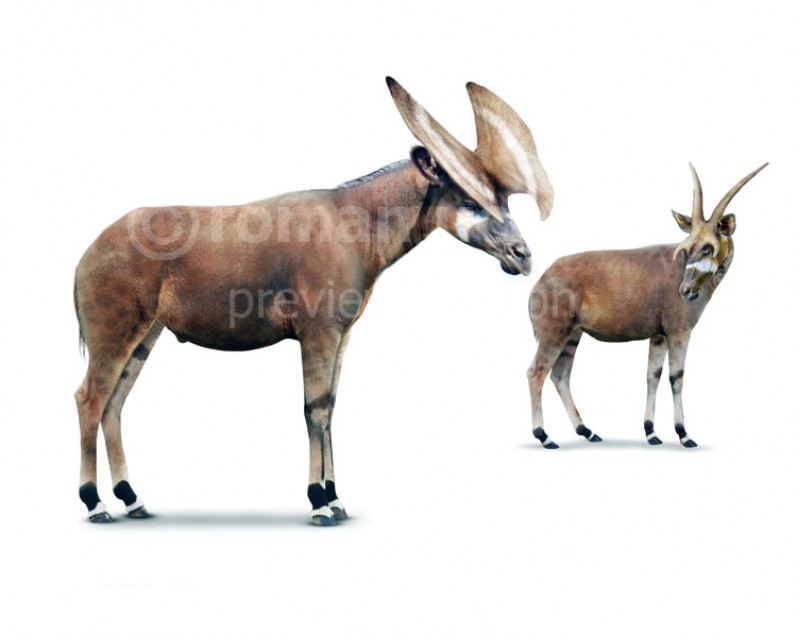


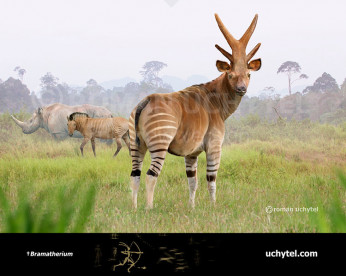
-346x277.jpg)
